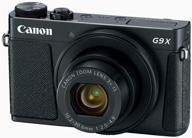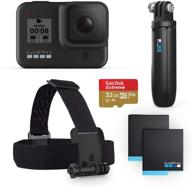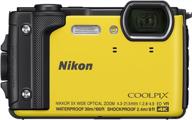
Review on AKASO Brave 4 4K WiFi Action Camera with EIS, Waterproof, Remote Control, 5X Zoom | Ultimate Ultra HD Outdoor Camcorder by Michael Gupta

Excellent camera with some usability issues
I have to say right away: Akaso refunded my money for the purchase as payment for testing and reviewing this camera. I have tried to make this review objective and honest. I've been an amateur photographer for 40 years and worked professionally for several years as a human factors researcher and designer for Bell Telephone Laboratories and also provided feedback to Akaso on this camera's user interface. I have three of these cameras, starting with the 5000, then the 7000 and now the Brave 4. This is by far the best of the three. although the UI needs work. So four stars instead of five. Akaso responded to my reviews and I decided to present here an abridged review of the camera, plus photos with technical details on the settings and how to correct images if you wish. Correct the lighting (levels) as I always shoot with an exposure value (EV) down a stop or two. However, often the images are so good that you may not want to fix them at all. I'll start with the good stuff because overall this is a fantastic little camera. I focused on photos because all three Akaso cameras produce excellent video. If you want to read a good video review here is the link: https://prodrenalin.com/review-akasa-brave-4-action-camera/ The footage shows a definite improvement with the Brave 4 and its Sony chip. Below are some examples I took with permission from a gallery in downtown Pennsylvania. Most are inside, some outside. I will upload more later. I have found that for the best images you select the following settings: gyroscope on, WDR off, angles like you have for example, less distortion at smaller angles, special effects off as special effects usually add a computerized aspect to images, although I don't like it have not tested that with this camera yet, maximum image size, do you want all the pixels and information that the camera outputs, the quality is normal, sharpness is switched off because you don't need it, automatic white balance because auto works well, i haven't checked the color, ISO should be set as low as possible as 400 gets grainy - the set I'm uploading today has ISO between 100 and 200, EV (exposure values) can be set to 1/3 or a stop lower to get the best color. and you're ready to go Take photos from at least 4 feet away. While the camera has excellent depth of field, it doesn't do well with close-ups. It also sometimes zooms up to 5x - a new feature - but it's not optical zoom, it's digital zoom, so the magnified image is only marginally better than cropping the non-magnified image. Try to keep the camera parallel to the ground to reduce distortion. You can also avoid image distortion by making sure that the most important horizontal objects in the scene are also horizontal and square on your screen. If they are curved, tilt the camera. Do not do that. Before and after taking a picture, hold the camera as still as possible until the information shown is reprinted on the display. This prevents you from moving the camera while the lens is open. Watch out for colour, because this little camera produces absolutely fantastic, true-to-life colours. Keep your fingers off the lens because the wide-angle fisheye lens lets you photograph anything that's close - the wide angle is 170 degrees. The following pictures were taken inside and outside with the above settings. I tried to blend them with the original camera image and rotate if needed. The corrected ones were mostly corrected in Photoshop Elements or Fastone. Elements has a great distortion filter, and adjusting levels and white balance is very easy in any program. I only had to correct the white balance for two images and the correction is very slight but obvious. These photos are a challenge for any camera as the lighting was a combination of natural, incandescent and fluorescent lighting - a tricky combination for even the best cameras. This camera shone in this situation. Photos are reduced to around 500 kb. In general, the original images were 5-6 MB, 72 dpi. According to the charts, this is enough for at least 24x36 printing. I'll try to post others from time to time with explanations of how the camera was set up, but this set is a pretty good example of what the camera is capable of. Now I always have it in my car or my bag. Here are the main issues I have with this camera. They don't outweigh the good, so don't let that put you off buying the Brave 4 at such a great price. However, this camera would be even better if the following points were corrected: (a) The battery compartment is easily lost and cannot be opened. I use a piece of tape where the loop should be so I don't lose it. (b) The control process is clunky and hopefully can be improved with a firmware update. I won't go into detail; You'll see what I mean if you click through the order of the articles (c) There isn't a really helpful instruction manual. A good one could be done very easily online. (d) Wi-Fi is difficult to understand and does not work. At least on my devices. The same goes for the bracelet controls, and there are no instructions for either. Again, none of these things are a deal breaker at this price point. If this camera was $300 or more, that would have been a much bigger problem. Leave comments if you have any questions and hopefully they will be forwarded to me. J
- Electronics
- unreliable
New products
Comments (0)
Top products in 📸 Underwater Photography

Waterproof Case for DSLR Cameras: DiCAPac WP-S10 Pro Series

9 Review

Photo camera Canon PowerShot G9 X Mark II, black

35 Review

GoPro HERO8 Black Ultimate Bundle - HERO8 Black Camera, Shorty, Head Strap, 32GB SD Card, 2 Rechargeable Batteries

50 Review

📷 Nikon W300 Waterproof Underwater Digital Camera with TFT LCD, 3-inch, Yellow (Model 26525)

9 Review






